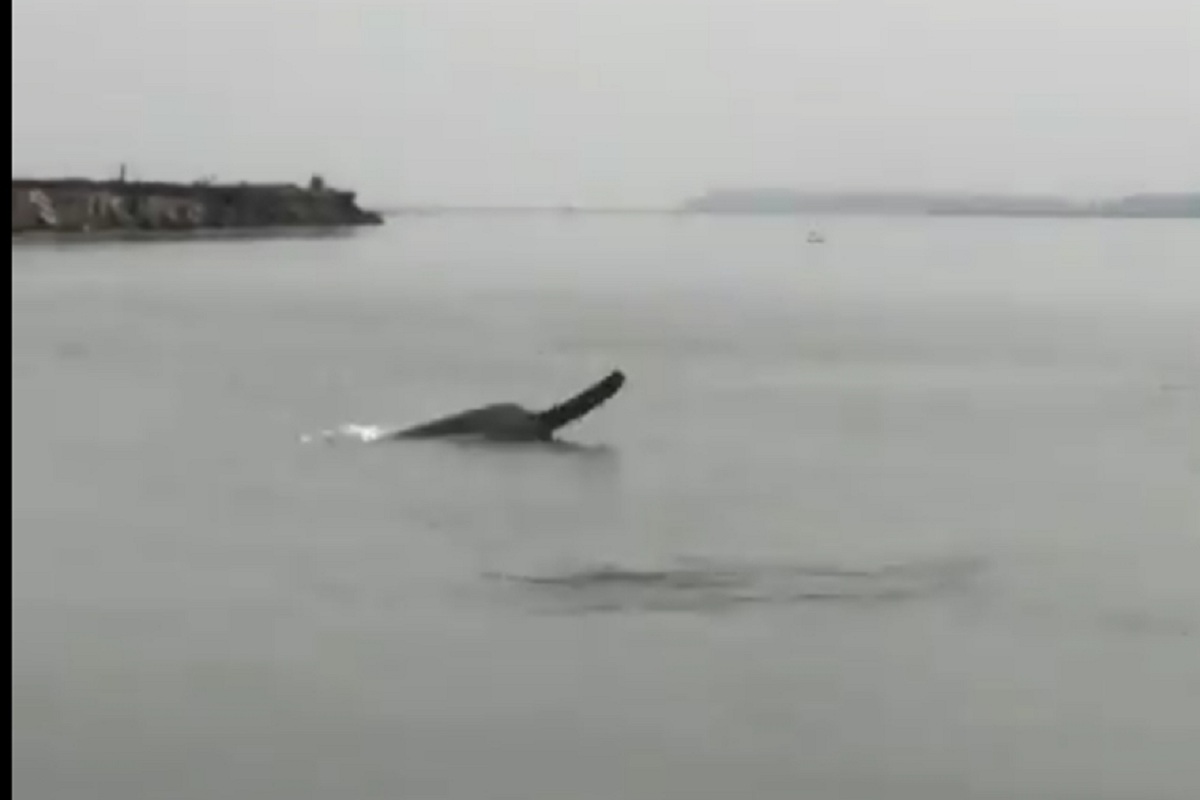The improving environmental conditions and decreasing pollution because of the lockdown has increased the opportunities of sighting the highly endangered River Dolphins in the Upper Gangetic basin here.
These highly endangered Gangetic Dolphins, which are found in just four river systems of the world including Ganges, are seen here in the 168 km stretch of Ganges between Bijnor barrage and Narora barrage here in West UP. However, the sighting has increased now because of less human activities in the river during the lockdown.
Advertisement
According to Dr Sandeep Behera, a prominent name in Dolphin research, there are more than 40 dolphins in the upper Gangetic basin here. Dr Behera, who is presently a consultant with National Clean Ganga Mission, had spent years of his life on the research on Gangetic Dolphins and conducted many dolphin census here in this stretch. He had been a part of many successful awareness campaigns on Gangetic Dolphins in the region.
When asked about the reasons of a good sighting of dolphins called ‘soos’ in the local language, Dr Behera said that the reduced level of pollution in the river, no fishing and riverbed farming are the main reasons.
All these human activities in and around the river have been on a halt due to the lockdown which has also reduced the level of pollution in the river and come as a boon to the aquatic life here.
Dr Behera told further that besides here the sighting of these dolphins has also increased near Ghats in Kolkata after a long period of 3 decades.
Gangetic Dolphins, which are also now the National Aquatic Animal, are found in just four river systems of the world, Amazon in South America, Yangtse in China (almost extinct), Indus in Pakistan and Ganges in India. It is said that when Ganges descended on earth, Dolphin was one of the few creatures that heralded the holy river and hence have religious importance as well. Its conservation was first believed to have started during the time of Ashoka the Great.
These dolphins are mammals and different from marine dolphins and are blind by birth. They can differentiate only in dark and light. They swim using sonar rays and it is believed that they are indicators of good biodiversity of the river. They are mainly found at the confluence of tributaries and other water bodies in river Ganga.
These dolphins, however, are exposed to multiple threats like synthetic nets as they are killed for their blubber. Besides river bed farming is another major threat as chemicals seep in river. Also, illegal fishing activities, the rising level of pollution, etc. are other factors.
The 82 km stretch of the Ganges between Garh Mukteshwar and Narora was the first wetland of UP that was declared as a “Ramsar Site” in the year 2006 for the conservation of these dolphins. Ramsar is an international treaty for the conservation and sustainable use of wetlands that was signed in 1971 in the city of Ramsar in Iran and India is one of its signatories.
Here in upper Gangetic basin, Karnwas and Aahar in district Bulandshshar, Pooth in district Hapur, Tigri in Amroha and Barrage in district Bijnor are the favourite spots for spotting these dolphins, told Dr Behera.
Though there has been a check on the killing of these dolphins some stray incidents do occur. Two months back an adult male dolphin was killed in Hastinapur area. However, the recent sightings of dolphins here have enthused the wildlife lovers some of whom have even shared their pictures on social media recently.











